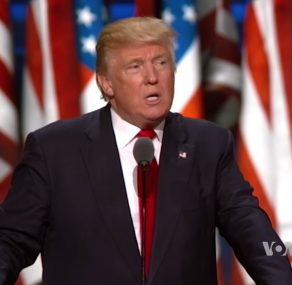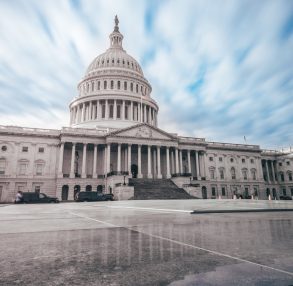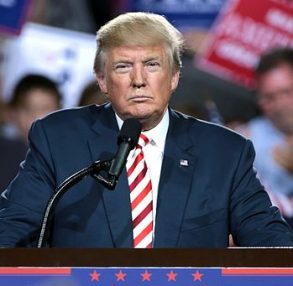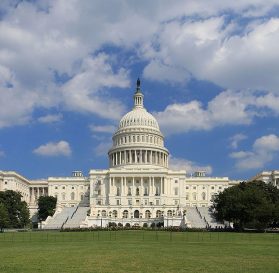Federal Retirement NEWS
Thank you for visiting PSRetirement.com for your Federal Retirement News and other information. We focus on what matters most to federal employees about their retirement plans and benefits along with articles that will shape the Federal Employee landscape will be available in this category.
Stay up to date with the latest happenings in the federal retirement world.
To view more news, click on the Federal Retirement News section.
Public Sector Retirement, LLC (‘PSR,’ ‘PSRetirement.com’ or the ‘Site’) is a news channel focusing on postal and federal retirement news and information. Although PSR publishes information believed to be accurate and from authors that have proclaimed themselves as experts in their given field of endeavor but PSR cannot guarantee the accuracy of any such information not can PSR independently verify such professional claims for accuracy. Expressly, PSR disclaims any liability for any inaccuracies written by authors on the Site, makes no claims to the validity of such information. By reading any information provided by June Kirby or other Authors you acknowledge that you have read and agree to be bound by the Terms of Use
Why I Decided to Buy Life Insurance for My Young Children
/by AdminWhy I Decided to Buy Life Insurance for My Young Children
Given that life insurance is specifically designed to protect against income losses, financial specialists often argue that it is unnecessary for children because they earn little or no money. Some also claim that life insurance policies for children are poor investments, reasoning that it’s better to spend the money on other things to help the child.
However, there are reasons to consider insurance plans for your kids. Because of what they could cost my wife and me in missed earnings if the worst happened, I have policies for all three of my sons. A policy also protects you financially from debts and other expenses that might arise if you lose a child.
To sum up, getting your children insured protects you from the terrifying prospect of losing them and then having to deal with the financial consequences while still dealing with the emotional trauma.
Continue reading for a breakdown of my reasoning for purchasing the policies for all three of my sons before each turned one. I also understand that certain parents do not want or need to purchase such insurance policies. I provide some advice on reaching a decision based on my 16 years as a life insurance agent.
Income losses
What made me get insurance for my children started with a tragedy that occurred close to me. A couple of years ago, two of my good friends lost their one-year-old daughter. The family’s breadwinner, who was devastated, couldn’t return to work for almost two months. He was not compensated during this period, so the loss was both emotionally and financially devastating.
When my kids were born, I feared that same scenario. Many companies have bereavement leave, which allows workers to take time off when a close relative dies. However, the employee is not entitled to pay during this time off in any state. I was concerned that if one of our children died, my wife and I would lose income during the weeks or months we could not work due to our grief.
I figured that a $50,000 policy on each child would provide us with three to six months’ worth of income. However, a package that increased the coverage to $100,000 cost just a few dollars more per month in premiums. So, that’s what I went for. The policy was just $9 a month, which was an incredible bargain. Although I’ve seen pricing as low as $3 a month for a $5,000 policy, a $20,000 policy typically costs $12 to $14 per month — enough to cover at least a month’s worth of missed wages and some other expenses.
Of course, certain parents may have excellent job benefits that will continue to compensate them through a lengthy bereavement. Or some may have the financial resources to go through a lengthy period with no income easily.
Neither of these is my case. My children are now 7, 10, and 12 years old and healthy, while I still gladly pay their life insurance policies.

Funeral costs
The harsh reality of losing a kid includes the need to say goodbye to them and the financial burden of making such arrangements. According to Choice Mutual, a funeral with burial and viewing will, on average, cost you $7,360 in the U.S.
Although my wife and I were both well-paid when our children were born, such an expense would have drained a significant portion of our savings. Our situation was similar to that of other parents of our generation. According to a new study by The College Investor, today’s Millennials (19-37 years old today) have an average net worth of only $10,400.
Again, if you have more money than the average parent with young children and can handle a hit to your savings with ease, insuring against potential funeral costs may not be a top priority. However, if a $7,000-plus funeral bill is out of reach, as it was for me when my boys were born, this possible cost might be another reason to consider purchasing a life insurance policy for your children.
My children’s future debts
Another risk I had in mind when buying life insurance for my children was co-signing on future loans for them and then being responsible for those debts if the unimaginable happened. In other words, I wanted to be able to support my kids and sign those debts without fear of being unable to pay them in the future if the worst were to happen.
I was motivated by a personal example. When I was 20, I bought my first car, a stunning, grey Nissan Maxima. I had put together $10,000 for a down payment, which was a significant sum for me at the time. I could easily pay the $157 monthly payment thanks to my parking valet earnings.
Since I had no financial history and no credit score, I was (unsurprisingly) turned down for the loan. My grandfather had to help me by co-signing the loan. I didn’t know it at the time, but my grandfather would have been responsible for repaying the loan if anything happened to me. To put it another way, he would have had the obligation of paying it off.
This story came to mind before I purchased the policies for my children. I knew having some life insurance on them would be beneficial if I had to co-sign on a debt of theirs. I was less concerned about co-signing an auto loan than I was about co-signing a student loan, which might result in much more debt. Private college tuition with room and board averagely costs $46,950 a year, and around 93% of all private student loans are with a co-signer.
According to the National Center for Education Statistics, about a third of students do not take on debt when pursuing a four-year degree, and this proportion increases for lower degrees. When students get loans, it’s typically from the federal government, which doesn’t require a co-signer, unlike private lenders.
Getting a life insurance policy on your children might help clear their debts when they pass away, which would be a welcome relief at a difficult time.
Deciding
The need to cover against the loss of your income, help with funeral expenses, and protect yourself against potential debts you might inherit if your child passed away are all valid reasons to buy life insurance on your children.
Your children, on the other hand, do not need life insurance from a financial aspect. You could save the money you’d spend on premiums by helping your children pay for college or by giving them a cash bonus when they reach a certain age.
When looking for a policy, keep in mind that it will be whole life insurance. This form of life insurance is more expensive than term life insurance, which I usually recommend. (My own children’s policies are term life, but this form of policy is not available for children anymore.) The cash benefit is a feature of whole life insurance that allows you to save money. When shopping for life insurance, compare policies on premiums and the cash value part.
You can also purchase insurance for your child with a “child carrier” on your term-life policy, which will probably be less expensive. However, this is only an option when you first purchase your policy; a child cannot be added to the coverage later.
How COVID-19 Has Affected Social Security and Medicare Services. By: Kathy Hollingsworth
/by leslie "kathy" hollingsworthThe death toll from COVID-19 in the United States is well over 500,000. Out of this sad figure, over 450,000 deaths were older members of the society—Americans who were at least 65 years old. These people were members of the society that benefited mainly from Social Security and Medicare services. The deaths are not the only impact of the pandemic on these two critical federal programs. There are other effects that the pandemic has had and will keep having on the millions of Social Security and Medicare beneficiaries who overcame the pandemic.
Social Security Systems and Intricacies
Popularly known as “Pay-as-you-go,” Social Security is one source of income for workers after retirement. While still in service, workers contribute to the program through payroll taxes. The funds from payroll taxes go into the Social Security Trust Funds, the same funds that pay those currently eligible to receive Social Security benefits.
At the start of the program, the money coming into the trust fund through payroll taxes was more than it was paying out to beneficiaries of Social Security. The table has since turned because there are more recipients than contributing workers now. If the downward trajectory continues, the Social Security Trust Fund will be empty, and recipients will only get paid from contributions from payroll taxes. Experts say contributions from payroll taxes will only be about 77% of the full benefits that current recipients get from Social Security.
Though this phenomenon existed before the COVID-19 pandemic, the pandemic has affected the Social Security Trust Fund balance as well.
How has the COVID-19 Pandemic Contributed to the Dwindling Social Security Trust Fund Balance?
The pandemic has contributed significantly to the dwindling balance of the trust fund due to some reasons, which we have listed below. The effects have been so extensive that experts have projected that the Social Security Trust Fund balance will become empty two years faster than estimated before the pandemic. The earlier projection was for 2035, but it has moved up to 2033 because of the pandemic, experts say. Here are reasons why the COVID-19 pandemic has affected Social Security.
- Many businesses stopped operations, which led to an increase in the unemployment rate.
- The pandemic led to a reduction in work hours, which translates to lower incentives.
- The government deferred withholding payroll taxes to ease the burden of workers and businesses during the pandemic.
- More people signed up for benefits during the pandemic.
- Many contributing workers died during the pandemic.
All these points are reasons for reduced payroll taxes, meaning the Social Security Trust Fund will indeed empty faster than pre-COVID projections.
National Average Wage Index, Social Security Benefits, and COVID-19
National Average Wage Index (NAWI) is one factor that determines how many benefits recipients can receive from Social Security. The index analyses how wages grow and use the information to determine the trajectory of inflation. As a result of the pandemic, the index for 2020 might be lower than preceding years.
What does this mean for Social Security beneficiaries? The Social Security Administration measures a recipient’s benefits using some criteria, including the NAWI, for the year the recipients turn 60 and will be eligible for Social Security benefits. So, those that clocked 60 in 2020 will receive fewer benefits than usual due to the pandemic. Sadly, they will continue receiving the reduced sum for the rest of their lives.
In September 2020, the Congressional Budget Office (CBO) predicted the 2020 NAWI would be -3.8% compared to 2019. More recently, the CBO has said it expects the 2020 NAWI to be closer to -0.5%. This means that benefits will be lower for anyone turning 60 in 2020 but not as low as initially predicted.
Compared to projections in 2020, things seem to be turning up. In September last year, the Congressional Budget Office (CBO) estimated that the NAWI for 2020 would be -3.8% compared to the index for 2019. The office has since recanted that statement because of recent events. The CBO now estimates the 2020 NAWI to be around -0.5%, meaning the benefits will be low but not as low as CBO had projected last September. However, this only affects individuals that turned 60 in 2020.
Effect of the Pandemic on Social Security Benefits for Disabled
According to a Social Security actuaries prediction of November last year, people who had COVID-19 but survived the infection could later suffer some lasting effects from it. As a result, more people will sign up for Social Security disability benefits in 2021 and the two years after it.
Effects of COVID-19 Legislation on Social Security
Another effect of the pandemic on Social Security is its legislation on the program and its beneficiaries. Even beneficiaries of the Supplemental Security Income will be affected by COVID-19-spurred legislation, such as the CARES Act, Consolidated Appropriations Act, and the American Rescue Plan Act. Here are the effects of the pandemic on Social Security:
- The pandemic led to three Economic Impact Payments of $1,200, $600, and $1,400.
- It also led to a reduction in FICA taxes that disturbed the prompt payment of FICA while ensuring that the decline and delay will not negatively affect the Social Security Trust Fund.
- It caused a pause in the receipt of student loans from Social Security payments.
- The Social Security Administration also received $300 million to support the fight against COVID-19.
- The pandemic led to an extension of payroll tax repayments.
- It also caused an extension of the qualification criteria and amount of Child Tax Credit and Earned Income Tax Credits. In contrast, the statutory exclusion to both tax credits remained the same.
Expected Lasting Effects of the Pandemic on Social Security
About three months ago, Social Security actuaries projected some lasting effects of the COVID-19 pandemic on Social Security. The agency projects that nothing significant will result from the pandemic. There will be a pandemic-spurred recession, which would have ended by 2023 with only minor permanent damage.
However, the agency projects some short-term effects such as:
- Reduced birth rates in 2020 and 2021.
- Increased death rates in 2020 (12% higher than usual), 2021 (6% higher than normal), and 2022 (2% higher than usual).
- A reduced number of people applied for disability payments in 2020, but the figure will be higher in 2021 and 2022.
- More unemployment in 2020, but things would have returned to normal by 2023.
- GDP, productivity, and earning levels will suffer a lasting reduction of 1%.
The Medicare System and Intricacies
Medicare is a federal insurance coverage plan for older citizens (65 and above), people with disabilities, and those living with End-Stage Renal Disease (ESRD). The Centers for Medicare and Medicaid Services (CMS) is a branch of the U.S Department of Health and Human Services that runs the program through payroll taxes, participants’ premiums, and funds from the government. The CMS makes Medicare payments through the Hospital Insurance (HI) and the Supplemental Medical Insurance (SMI) Trust Funds. While HI funds Medicare Part A (Hospitalization), SMI funds Medicare Part B (Medical) and Part D (Prescription Drugs).
HI Trust Fund’s primary source of financing is payroll taxes. This source has been dwindling for a while, just like the Social Security Trust Fund. Without the contributing effect of last year’s pandemic, experts had projected that by 2026, the HI Trust Fund would only be able to pay 90% of hospitalization costs of the participants of Medicare. On the other hand, the SMI Trust Fund, which gets most of its funds from premiums and government allocation, will continue to finance Part B and Part D without problems. This does not mean it will remain untouchable. With inflated premiums and more reliance on government allocation, it is bound to encounter its challenges down the line.
Effects of the Pandemic on HI and SMI
HI Trust Fund will shoulder the bulk of the pandemic effects on the Medicare Trust Funds. The extent of the damage is not known yet. As the 2020 Medicare Trustees Report states, the trustees cannot accurately give a projection that accounts for the effects of the COVID-19 pandemic at this time.
According to CBO, around two million Medicare participants will need hospitalization due to coronavirus infections during the pandemic. Of this figure, the CBO estimates that 1 million would be in hospitals under Medicare’s inpatient prospective payment system. As a result, the CBO states that the CMS would be spending about $3 billion more than the average in 2020 and 2021.
The SMI Trust Fund will also be indirectly affected. By 2030, Medicare trustees project a 6.3% increase in the percentage of personal and corporate income taxes for financing SMI and a 14.3% increase by 2094.
Effects of the Pandemic on Medicare Participants
There are several ways through which the pandemic will affect Medicare participants apart from the possibility of death or permanent disability. According to a CMS survey, here are some effects the pandemic has already had on Medicare participants.
- About 21 participants had to avoid going to the hospital for non-COVID-related issues.
- 15% of the participants in the survey said they felt more worried about financial security.
- 41% said they had challenges coping with stress.
- 38% said they were having challenges maintaining a relationship with their friends and family.
Medicare participants receiving medical care from their housing also suffered from the following effects:
- They needed more social service support.
- They felt more lonely and depressed.
- Those with physical and mental health conditions had to deal with worsened symptoms.
- More of the participants resorted to alcohol and drug use/abuse.
- The rate of domestic violence rose.
- They also experienced a shortage of medical staff and equipment.
On the flip side, the pandemic had some positive effects on the participants as well:
- Medicare participants don’t have to pay for COVID-19 vaccines, tests, and treatments.
- They also have a broader coverage of medical services, including telehealth services and hospitalization when required.
Effects of the Pandemic on Physicians, Hospitals and Other Medicare Providers
Within the first six months of the COVID-19 pandemic, Medicare providers, such as hospitals, experienced the following:
- Payments for fee-for-services decreased by 39%, inpatient services by 33%, and physician services by 49%. These figures rose to 96%, 93%, and 95%, respectively, by 1st July.
- At the end of the sixth month of 2020, cumulative payment deficits ranged from 12% to 16%.
- There was also a drastic reduction in the need for personal preventive screening and surgical services.
COVID-19 Legislation and Medicare
The bulk of COVID-19 legislation impacted Medicare. In fact, within the first seven months of 2020, over two hundred regulatory changes were made, with about forty-nine more by the eighth day of January 2021. Here are some COVID-related regulatory changes that affected Medicare:
- Expansion of Medicare coverage for telehealth services
- Removal of cost-sharing for vaccination procedures
- Increment of Medicare payment fees to providers
- Special waivers on certain hospital length-of-stay criteria
- More increment of payment fees to physicians
- Elimination of sequestration slashes for March 2021
These changes were made through the CARES Act and the Consolidated Appropriations Act. The first four changes were made through the CARES Act, while the last two were made through the CAA.
Lasting Effects of the Pandemic on Medicare
Like Social Security beneficiaries, participants of Medicare are people who are more susceptible to COVID-19. People in this category (older citizens who are 65 or older and people suffering from disabilities) might experience medical and financial concerns due to the pandemic.
Many participants had to pay a lot of money to take care of pre-existing medical conditions. As a result, they were suffering from some monetary challenges even before the pandemic. The pandemic led to some regulatory changes that helped reduce these costs, but the respite will only be short-lived.
These monetary challenges will only worsen with the increase in the unemployment rate, especially for older members of marginalized communities who received fewer incentives before retirement. They also have fewer Social Security benefits and reduced retirement contributions. The result of all this is that the pandemic will have more permanent effects on Medicare and Medicare participants.
What Will the Condition of Your FEHB be After Retirement?
/by AdminOne area federal employees ask a lot of questions about is the FEHB program. Here a few ways in which the plan changes for Feds after retirement.
Does FEHB Coverage End With Retirement?
No, it does not. Feds can continue enjoying the Federal Employees Health Benefits (FEHB) coverage after retirement as long as they fulfill the following criteria:
Five years of enrollment in the program before retirement (five consecutive years that precede retirement).
Not up to five years of coverage, but the employee enrolled as soon as they could.
Prior CHAMPVA or Tricare coverage that will make up five years when added to FEHB enrollment years (such workers have to be enrolled in FEHB before they retire).
Employees who have elective or discontinued service retirement and do not have up to five years of enrollment.
In exceptional cases, workers who have less than five-year coverage could be allowed to carry on with the program in good faith.
Payment of FEHB Premiums After Retirement
Postal service employees will pay higher FEHB premiums after they retire, but workers in all other agencies continue paying the same rate. The premium is higher for Postal Service employees because union agitations reduced the premiums for that agency’s active duty employees. After retirement, the rate returns to normal.
However, all federal employees, postal or not, will no longer pay the premiums with pre-tax dollars, meaning the premium will be more costly than it was during active duty. This rule might not change in the coming years, as many people have agitated for a change with no success.
FEHB and Medicare Part A (Hospital); Any Relation?
All federal workers have access to Medicare Part A, but it does not affect their FEHB coverage. As soon as a retiree can start accessing Medicare, the two coverages will be complementary and not adversarial.
For retirees with the two coverages, Medicare serves as the central source of healthcare insurance. In contrast, FEHB coverage plays a supporting role. But in situations where either plan does not cover a particular condition or illness, the one that covers it takes prominence without the other one supporting it.
FEHB and Medicare Parts B, C, and D
The Medicare plans for “Medical,” “Advantaged Managed Care,” and “Prescription Drugs,” tagged Parts B, C, and D, respectively, do not significantly affect FEHB enrollment. These three plans are not covered through deductions during active duty, unlike Medicare Part A. Retirees who want any of these plans have to purchase them themselves.
However, Part C, which is available only for those with Parts A and B, is similar to FEHB in coverage. So if you have the two, you might consider suspending the FEHB coverage until a later time.
How to Submit Your ‘Healthy’ and Complete Federal Retirement Application. Sponsored By: Jeff Boettcher
/by AdminHow to Submit Your ‘Healthy’ and Complete Federal Retirement Application, by Jeff Boettcher
If you are currently going through the process of planning your retirement, you will need to submit a complete federal retirement application, but the Office of Personnel Management (OPM) suggests making it ‘healthy’. For example, this describes a form that is complete from the very top while containing the right signatures and dates. With all the questions asked on the form, you should provide full answers as well as check the appropriate boxes.
Avoiding Common Problems with Retirement Applications
According to OPM, there are some common issues that arise when completing a federal retirement application. For many, this includes issues with the survivor election chapter, which needs to be filled regardless of your relationship status. For example, consent must be given by the spouse if a married applicant were to elect less than a full survivor annuity. Furthermore, the section regarding court orders must still be addressed even if there is no order.
Elsewhere, you’ll also need to list all periods of creditable civilian and military service; for the latter, you’ll need a Form DD-214. If you happen to be taking early retirement or perhaps even discontinued service retirement, there will be additional documentation to complete. Finally, the forms require you to provide information regarding your FEHB status and whether any of your policies will continue into retirement. For example, individuals need to have worked in federal employment for five years before their retirement date. If you also want to remain eligible for FEGLI, you need to prove your coverage for the previous five years here too.
As you can see, a healthy retirement application can be difficult to achieve so take your time, don’t feel the need to rush the process, and don’t be afraid to ask for assistance if you feel your application would benefit. Oftentimes a qualified financial professional is the best solution to your lack of knowledge. But make sure you find a highly-trained and knowledgeable federal employee financial planner.
Americans with a DC Plan more Optimistic about Retirement Savings
/by AdminA new survey has revealed that the Americans who have a DC plan are more optimistic about their retirement savings. The satisfaction was mapped against the data collected in 2012. People were also more optimistic about not having to work past retirement and their savings lasting for the lifetime. The survey highlighted that some DC Plan participants were less confident about retirement. It also pointed out that many people were aware that they need to start saving more towards retirement. Many of them also admitted that they have not succeeded in achieving their retirement savings goals last year.
Auto Enrolling for Retirement Savings
A new survey conducted by Mathew Greenwald & Associates in conjunction with J.P. Morgan Asset Management has revealed that Millennials are preferring auto-enrolment and auto-escalation methods to boost their retirement savings. The survey was aimed at knowing how the DC plan participants’ opinion on retirement readiness has changed since 2012.
The Result
The survey found out that the outlook on the matter of retirement savings has somewhat improved since 2012. The survey was conducted in January 2016 and the subjects of the survey were 1,001 plan participants. The survey was conducted online. It revealed that about 59 percent participants think that they would need to work past retirement. This percentage was 70 percent in 2012. The survey also discovered that about 44 percent people are confident that their savings would last throughout retirement. This percentage was earlier just 31 percent.
The Fears
The survey has also found out that over half of the DC participants, 56 percent to be precise, believe that the retirement savings they have may not last the entire lifetime. In the survey, about 68 percent participants admitted that their contribution rates in 2015 were lower than they expected or what it should have been. The same group of people believed that they must save at least 20 percent more than what they are saving right now if they wish to have a better retirement.
Nearly 75 percent of these participants also shared that they must save about 10 percent more of their pretax salary to boost their retirement savings. About 76 percent of people have confessed that they missed this vital target last year. The reasons that are stopping these people from saving more are inertia and increasing financial demands of today’s times.
TSP S Fund Shows on Top
/by Constance FitzgeraldThe stock market performed well for investors this past July. The Dow Jones average was up by over four percent for the month. The S&P 500 (the index by which the C fund is based) rose 3.1% over the month, while the Nasdaq went up 1.6%.
July’s Highest Performing TSP Fund
There were positive returns for all of the Thrift Savings Plans (TSPs) in July.
July Shows C Fund on Top and S Fund on Top for Twelve Consecutive Months
With a return of 3.72%, the C fund came out on top. With 17.46%, the S fund has been leading all fund for the past twelve months.
On top of all TSP funds with a 7.91% return for the year-to-date is The S fund. Next comes the C fund showing a 6.45% return for the year-to-date (YTD).
If you would like to review historical information about the annual rate of return for funds, you can visit TSPDataCenter.com. You can also find the rate of return for each fund by month for each year at TSPDataCenter.com.
How TSP Participants Can Distribute Their Investments
Participants will find the highest long-term returns with stocks as opposed to bonds. The negative to this broad explanation is that there may be times when stocks fall but bonds do not. For instance, from 2001-2003, stocks plummeted.
The C fund fell for three years in a row:
- -9.14% in 2000
- -11.94% in 2001
- -22.05% in 2002
The G fund went up during the same three years:
- 6.42% in 2000
- 5.39% in 2001
- 5% in 2002
Undoubtedly, G fund investors were feeling positively regarding their decision to invest more money into the G fund and less into stocks. There were, of course, unexpected events in the midst of this stock downturn, The World Trade Center Bombing. Events such as these are obviously not common, but can and do happen.
Thirteen out of the following fifteen years, the C fund finished on top of the G fund, some by an extensive amount.

How To Choose A Supplemental Investment For Your TSP | Linda Jensen
/by Linda JensenLINDA JENSEN – About five million people have a good chunk of their retirement savings in the TSP (or Thrift Savings Plan), but there are many of them are not using it to its full potential. What is the TSP? It’s the government’s correspondent to a company’s 401(k) plan. Money is automatically put into a plan each pay period into at least one basic investment option. The great thing about the TSP is its simplicity – unlike other plans. It provides a limited number of investment choices, which decreases the chances for mistakes. It also gets rid of asset classes that add to the long-term value for people looking to save for retirement.
Are you looking to get the most from your TSP?
The Thrift Savings Plan provides target-retirement date funds, making it really simple to choose an investment to save into. As an investor get closer to retirement, the investment gets a little riskier to ensure they have enough money for retirement. There are five choices with the TSP:
- C – Considered a clone of the S&P 500
- F – Index of government and corporate bonds throughout the world
- G – Investment of short-term U.S. Treasury securities
- I – Investment of International stocks of 21 countries (U.S., Canada, etc.)
- S – Index of all stocks in the U.S. not seen on the S&P 500
Each choice is exposed to both small and large-cap U.S. stocks, international stocks, the basic bond market, and a cash-like, risk-free option. The biggest weakness of the options is that there is no value option. In the last 10 or so years, value stocks have constantly offered great long-term returns in growth stocks of the TSP’s S and C funds.

When You Want Higher Returns From The TSP

If you go for a TSP option, you can attain high long-term results from the S Fund, which means you’re investing the portfolio in small and mid-cap stocks for an extended period. These funds have done much better than stocks seen in the I and C funds. Aggressive investors could put up to 80 percent of money into the S Fund. More conservative investors could boost the expected returns into equity funds, with an increase in combined equity between 60 and 70 percent. For every extra 10 percent in equities, the long-term expected return increases 0.5 percent a year. While this does not seem like a lot, it can make a huge difference over the span of 20 to 30 years. It also means you have much more money at the time you want to retire. If the investment is in a target-date TSP fund, a person could allocate another 10 to 20 percent of their typical contribution to the S fund.
Higher Returns From Stocks Not In The TSP
While the TSP has no value options, you can always have an outside account to complement the TSP. For example, the Roth IRA is one option that allows you to contribute $5,500 a year or $6,500 a year if you’re older than 50. How do you do this? Invest the whole IRA into small and large-cap value stocks, emerging markets stocks. However, if you have a minute amount of money to go into this, you’ll have a great long-term option if you add the small-cap value either with a low-cost index fund or ETF.

Linda Jensen is the principal and owner of Asset Care & Preservation Services with offices in Olympia, WA. Linda began her career with Prudential Preferred in 1994 where she was an agency leader. She earned the credentials of a financial planner and has been in practice as an investment and insurance professional since that time. Linda started her own company in 1997.
Articles from Linda Jensen:
Linda Jensen | How to make the most out of your TSP Plan
Linda Jensen | How to Successfully Fund Your Retirement Years

Defense Department Reports On Take-Rates Projections For BRS
/by Admin
A report from the Defense Department’s Office of Actuary provides “take-rates” projection for its new Blended Retirement System (BRS). Service members can choose a lump-sum, six-figure amount but they relinquish up to 50 percent of their earned retired pay until they reach 67-years of age. The latest “Valuation of the Military Retirement System” report suggests 22.8 percent of retiring enlisted and 5.2 percent of retiring officers will feel tempted by the cash amount and be okay with the deep cuts in their retired pay. When it comes to accounting, everyone that chooses the lump sum and cut their retired pay in half instead of a quarter will see full annuities start when they are 67 years of age.
The actuary predicts two percent of retired reserve officers and 8.4 percent of reserved retired enlisted will be tempted to take the lump-sum and cut their retirement pay by 50 percent until age 67. In the 2017 valuation report, looking at retirement plants, there was an estimated $14 billion in future savings to the BRS-related fund. However, there was no estimate on the take-rate for the lump-sum option. The cost savings also did not take into consideration two key aspects of the new system where department costs don’t impede retirement funding:
- Continuation bonus payment between year 8 and year 12 of service
- Government matching of TSP member contributions
Air Force Maj. Carla Gleason said the latest report did not estimate the savings that would be seen in the BRS, but that the goal was to improve the government-provided retirement benefits to more people in the armed forces. Many people have assumed it’s to reduce the government’s costs.

Why Is The BRS Blended?
The BRS is blended because it includes two new features with one from the High-3 plan. It offers a reduced annuity for 20 years or more of service (20 percent below those with the High-3 plan). The TSP offers government matching that gives federal employees a nest egg they can still use even when they leave the service. They’re also given a one-time payment to entice them to stay with the service for much longer. The Military Compensation and Retirement Modernization Commission came up with the BRS, which also offers a lump-sum option that people have regarded as being unfair.
Anyone entering the military on or after Jan. 1, 2018 are enrolled automatically into the program. Any person in the military before that date must decide before the end of the year (Dec. 31, 2018) if they want the BRS. Reservists with less than 4,320 points can opt into the program, but must also decide by the last day of the year. Anyone with 12 years or more of military service at the end of 2017 may stick with the High-3 plan, which is offered under the Final Pay plan. Another retirement plan called Redux is dedicated to the current 63,300 retirees. It was developed and is geared toward the employees that took the $30,000 Career Status bonus offered in year 15 of service to switch from the High-3 to a Redux.
Congress came up with this plan in 2000, but as the bonus value was lost to inflation, it became less attractive. The law that developed the Blended Retirement System also noted the CBS-Redux would end before 2018. However, the 63,300 who opted into the plan are stuck with that reduced annuity plan. The lump-sum feature of the BRS is simple but also controversial. After all, there is no federal retirement plan currently offered that provides a lump sum that replaces some of the defined benefits. It’s an offer typically seen in the corporate world, but they don’t tend to have the controversial formulas that determine the lump sum Congress imposes on BRS participants.
Defense officials were adamant that this feature wasn’t included in the new BRS when the plan was moving through Congress in 2016. However, the House caved to the Senate Armed Services Committee and included it anyway on their urging. They targeted it to retiring members by claiming it was giving them financial flexibility – to pay debts off, purchase a home, start a business, etc. For the majority of retirees, the lump sum isn’t a good idea, as it could lead to impulsive purchases and investments they don’t need. It would also cut into their retired pay that would have to last up to 30 years.
Actuaries are bothered by how the calculations of the lump sum, which uses personal discount rates and are regarded as not actuarially, sound. Personal discount rates evaluate a person’s current dollars over future dollars. The higher your discount rate, the more savings the Defense Department has. Should the department use the market rates rather than personal discount rates to determine the present value, the retirement lump sums would be much higher than initially planned. The Department of Defense’s Board of Actuaries’ report states the amounts, though still extremely enticing are still rather unfair.
The Board stated the personal discount rate isn’t the right method for discounting. It also guessed that policymakers would include an aggregate personal discount rate for enlisted and officers, which wouldn’t be right for other individuals. And, they did, as noted by the most recent valuation report the aggregate personal discount rate is going to be used. According to the department, the discount rate is based on the Department of Treasury High-Quality Market rates for the benchmark. This adds a premium to the market of over four percentage points, following the BRS’s personal discount rate requirement.
TSP and Divorce: How The Court Will Handle Your TSP and Other Federal Benefits | Linda Jensen
/by AdminThe number of couples getting divorced each year is quite high, and dividing up assets can be tricky. If you’re a current federal worker or a retiree who is getting divorced, it’s important to understand how the court will affect your TSP.
Currently, there are no federal laws that former spouse automatic access to the TSP balance. You can either agree to add it to the division of assets, or the state will provide the awarded amount. The TSP will need a Retirement Benefits Court Order after the divorce. This can come from the divorce decree, legal separation or annulment or it can come from the court-approved property settlement agreement.
The Qualified Domestic Relations Order may also serve as the RBCO.
The TSP has a Court Orders and Powers of Attorney booklet that you can find on the TSP website under “Forms and Publications.” It’s a 31-page booklet with a plethora of useful information, layman language and a checklist to help you and your attorney to create legal-looking documents. You can also find RBCO requirements in the booklet.
Once you have a court order in place, the TSP account will be frozen, and you won’t be able to get a loan or make withdrawals until the divorce is finalized. If there is an outstanding loan on the TSP account, the remaining loan balance is added into the account balance to determine how much the spouse is permitted to have unless the court order deems it can be excluded. The court order will provide the award in either percentage or award amounts. The TSP cannot be made to pay more than the current account balance.
The TSP goes along with the FERS annuity and CSRS, which means there are different rules for each one. You can learn more about these rules by going to the Handbook for Attorneys on the Office of Personnel Management website. If you’re getting divorced, it’s imperative that your divorce lawyer has a good understanding of the rules regarding federal benefits. It may not be enough to have a standard QDRO unless specific criteria are met. If there are no attorneys who understand the federal rules regarding your TRP and other federal benefits, give them the handbooks to read and familiarize themselves with.

Linda Jensen is the principal and owner of Asset Care & Preservation Services with offices in Olympia, WA. Linda began her career with Prudential Preferred in 1994 where she was an agency leader. She earned the credentials of a financial planner and has been in practice as an investment and insurance professional since that time. Linda started her own company in 1997.
Articles from Linda Jensen:

How The Feds Raising Rates Impact The F and G Funds – Linda Jensen
/by Linda JensenLINDA JENSEN – The federal government has raised key interest rates again, ranging from 1.75 percent to two percent, making it the seventh time the U.S. Federal Reserve has raised prices since 2015. Rates were increased 0.25 percent each time.
On top of that, the Fed noted that it was possible two additional increases would potentially come in 2018 instead of just once more. The decision will base itself on the economy’s growth and strength.
The U.S. unemployment rate is currently 3.8 percent – the lowest since 2000. The economy is also reasonably robust although some inflation has occurred. The majority of recession indicators do not predict a recession in 2018, which means the Feds will continue to increase the rates to ensure inflation stays down.
What Impacts Are Being Felt With the F and G Funds?
When the Fed raises interest rates, it tends to mean higher interest rates for bonds and treasuries. The G fund offers returns that are nearly equal the 10-year treasury yields, meaning higher rates have better G Fund returns. The great thing about the G Fund is there is little to no risk with interest rates – something you see with 10-year treasuries.
Although the G Fund has a positive stance with the rise in interest rates, the same cannot be said for the F fund. In the last 12 months, the F Fund has only led to negative returns for investors.
Why is that?
The F Fund has a 5.75-year maturity, which essentially means a one percent interest rate increase could lead to a 5.75 percent decrease in security price. Right now, investors are seeing 2.72 percent in interest. However, when the Fed raises rates once more, the newer bonds will provide higher yields, and existing bonds will decrease in price to provide the same yield for the bond type. Although investors still see interest accumulate, the value will drop. The total bond fund return depends on the bond’s prices and the interest offered.
With the way the Fed is increasing rates, the F Fund could turn negative for many investors – something already happening.

What Should You Keep In Mind…

With current interest rates, it’s safe to say that the G Fund is a much better investment than the F Fund. After inflation is taken into account though, the G Fund isn’t all that great either. But, it’s not offering anything negative right now.
The Fed, when it appears a recession is coming, will reduce the interest rates, meaning the F fund will do better than the G Fund, but only for a short-time.
Linda Jensen is the principal and owner of Asset Care & Preservation Services with offices in Olympia, WA. Linda began her career with Prudential Preferred in 1994 where she was an agency leader. She earned the credentials of a financial planner and has been in practice as an investment and insurance professional since that time. Linda started her own company in 1997.
Articles from Linda Jensen:

TSP Stocks Face Uncertainty In Response To Worldwide Uncertainty With Tariffs
/by AdminThe Dow Jones Industrial Average had a rough start to 2018, with last month seeing a one percent decline in the C Fund, a two percent drop in the I Fund and a 0.2 percent increase in the S Fund. However, an increase in U.S. interest rates are putting down negative pressure on stock valuations, but it’s the fear investors have on the trade wars that are affecting the TSP performance.
This is why you should diversify your portfolio.
Will There Be Higher Worldwide Tariffs?
For many years, the U.S has had relatively low import tariff rates compared to other parts of the world. With the nation threatening higher tariffs, there are two possible outcomes that could happen:
Other countries could lower their own tariffs, aligning them with the U.S. tariffs, ensuring that U.S. tariffs stay low. This means U.S. products would be able to compete ina global market.
Other countries could resort to retaliatory measures such as raising their tariffs, which would mean high tariffs for all nations, reduced worldwide trade and boost protectionism.
The Trump Administration has already announced it would implement tariffs on an extra $200 billion of Chinese products, and even flirted with the idea of imposing a 25 percent tariff on all European car imports. The current European car tax rate is 2.5 percent with European trucks taxed at 25 percent. The EU taxes the U.S. vehicles at 10 percent.
With countries looking at the second option in response to the U.S.’ moves, it means markets are on shaky ground. Many well-known U.S. companies – Apple, Caterpillar andothers, see a large part of their revenue from countries like China. For them, a trade war is risky.
For smaller companies that don’t have a lot of international exposure, tariffs are unlikely to affect them as much. Thiscould be why the S Fun appears to be doing better than the C Fund.
OPEC Will Boost Oil Production Slightly
Energy stocks have seen a boost thanks to OPEC’s decision to increase the production of oil slightly. This helped to ease investors’ concerns that OPEC would continue to reduce its production, which would have a negative impact on the energy stocks.
OPEC’s decision would help in one of two ways – stabilize the market or decrease the price of oil slightly. This would help consumers and businesses who often face higher prices during the summer months. When oil prices are astronomically high, it causes the economy to slow down and cause a recession. Therefore, a decision to boost oil production output can decrease the potential of this happening.

How The TSP Funds Could Be Affected By Tariffs and New Governments
/by AdminTwo things are affecting the worldwide financial markets – changes in the European government and international tariffs. The TSP funds most affected by tariffs will be the stock-based TSP funds and this impact could last through the end of the year.
For months, U.S. President Donald Trump said he would impose tariffs on imported aluminum and steel but gave a temporary pass to Canada, European Union, and Mexico while negotiations were ongoing. However, the pass recently ended when the tariffs were imposed on the U.S. closest allies. When that happened, the countries announced it would impose retaliatory tariffs on many of the U.S. exports. The amount of money involved isn’t having too much of an effect on the national economy, but some sectors are feeling the pinch more than others. Some analysts suspect this could lead to even more U.S. tariffs, which could lead to even more retaliatory tariffs. This could lead to a drop in worldwide trade, isolate the U.S. from its allies and impact any involved economies.
Of course, it remains to be seen if any other tariffs will be imposed and how impactful they will be on the U.S. trade deficit the president’s administration is trying to improve. The risk could hurt jobs, economic production, and international trade. The positive could be that the Trump administration can come up with new, more favorable trade agreements and reduce the U.S. trade deficit. This typically benefits the currency exchange rate and domestic economic production that could steady a country’s share prices such as the C Fund holdings.
The New Government Of Italy
A little while ago, global markets were rattled by Italy’s new government. However, some of these concerns have smoothed out, but still has left uncertainty in the I fund that stands to be watched a little closer. Italy held elections in March that led resulted in ambiguity. Although there were three key parties, none of them won by a clear margin, which means a hung Parliament. The League and Five Star Movement, which were the two successful parties, considered building a coalition government.
This potential coalition was in jeopardy after the country’s president refused to agree to the proposed finance minister offered by the coalition because of the stance it has against the shared Euro currency. When this happened, there was a market sell-off in worldwide equities because of concerns Italy would need to hold more elections to address the uncertainty. The president, however, changed his position, after some re-arranging of the government picks and another finance minister. This alleviates some investors’ short-term concerns, but still, long-term concerns are affecting the market.

The New Government Of Spain

Another EU problem is Spain, where the prime minister was forced from office by the parliament in a no-confidence vote because of the corruption scandal going on in the political party. Although parliament has appointed his opponent the prime minister, his power is rather shaky because he controls only one-fourth of the country’s parliament.
I Fund Concerns
Most people may recall the European sovereign debt crisis that led to the global crisis in the market from 2010 to 2012. Due to the unaddressed primary issues plaguing the market, investors are worried Spain and Italy may spark those concerns once more.
Another possible issue is that many European countries have one currency – Euro – with agreements in place to keep reasonable levels of debt despite some nations already exceeding the agreed-upon standards. Many countries, the U.S. and Japan, have control over their currency. If the debt is high, they can inflate themselves out of the issue rather than default. Some countries don’t have a say in their national budget. A shared currency means individual countries entangled with other countries. One country’s debt problem could affect the entire system.
As it currently stands, Italy has the highest debt-to-GDP ratio; the Eurozone’s third-largest economy. The United Kingdom never had a part in the shared Euro currency and is currently leaving the EU. However, France, Germany, Italy, Netherlands, Spain and other Eurozone nations still have an array of obstacles that are the result of countries who share their currency. Italy is the biggest issue.

TSP Officials Provide Explanation Of Law’s TSP Withdrawal Guidelines
/by AdminFederal government officials recently announced how they’re going to offer TSP participants for additional flexibility in response to the law President Donald Trump signed last year.
The 2017 TSP Modernization Act lets federal employees and retirees make several age-based withdrawals from their accounts and still be eligible for the partial withdrawals when they finally leave their government position. People who leave their government post can make several partial post-separation withdrawals as well.
During the Federal Retirement Thrift Investment Board meeting, project manager supervisor Tanner Nohe informed others that agency employees were working on implementing the new law, which went into effect in November 2017. The law’s full implementation is expected September 2019.
According to rules presently in place, TSP participants can only make one partial withdrawal in their life – one after they leave federal service or one in-service at 59 1/2. Once the withdrawal has been made, they can no longer take money out of the account unless they want to make a total withdrawal – either in the form of an annuity, monthly payment or lump sum.
Nohe said the latest rules allow for participants to make multiple withdrawals –once every 30 days. They can also make in-serve based withdrawals four times a year if they want. He said the change is more of a processing rule than anything – a way to avoid duplications and mistakes.
The law gives participants more flexibility in how much and how often they want the monthly installment payments to be. Before the act was passed, former federal employees could get payments on a monthly basis, with changes as to how much made only during the open enrollment season – October through December.
With the impending changes, participants can choose to receive their TSP payments three ways – monthly, quarterly or yearly. They can also make changes to the amount and frequency whenever they would like and participants will be allowed to stop and start the installment periods. Retirees can make partial-post separation withdrawals even if they’re getting regular payments.
Nohe said before the new laws’ provisions are enacted, the TSP will stop the account abandonment practice in August. According to current TSP and ITS rules, a 70 1/2-year-old participant is required to make a full withdrawal and take the necessary minimum distribution amount out every year.
A person who fails to do this means the TSP moves their money into the G Fund – the government securities that amass a statutorily mandated interest rate and forces participants to make them aware of changes.
Kim Weaver, spokeswoman for the Agency, said this typically causes people to reach out to them, letting them know how they want payments to be set up and what amount of money is to be reinvested in their other portfolios.
Nohe said the change means a full withdrawal option is no longer needed. Rather than abandoning accounts, the agency sends participants a check for the minimum withdrawal payment as noted by law. Participants can also choose if the required payments be withdrawn from their Roth or standard account or the combination of them.

Battle Regarding Official Time and TSP Takes Place On Capitol Hill
/by AdminCapitol Hill recently held a touchy hearing and debate about the practice of union federal employee members being paidwhile carrying out representational duties. The matter ended with an executive order to reduce its use.
House Oversight and Government Reform Committee Republicans attacked the official time practice in a hearing that didn’t include any information from employee groups. According to Republicans, this official time is a waste of taxpayer money. It was more of a subsidy.
Democrats, on the other hand, said official time leads to agencies saving money. Their explanati0on is that they help foster relationships between management and labor, decrease the number of formal grievances and litigation and let the parties work alongside each other to ensure more efficient operations are in line. They also work together to deal with future issues and enterprises.
Republican lawmakers looked at the 2017 fiscal year and found that more than 980 employees spent half their time on official time – 221 of those employees were earning $100,000 a year. Perhaps the issue was a vision because the very next day, President Donald Trump made it easy – through a series of executive orders – to fire employees who were not performing their duties and restricted their use of official time.
In one order, agencies could limit employees’ official time use to 25 percent of their workday when they were negotiating with unions. It barred employees from using the time to represent employees who were filing a grievance or appealing negative personnel action.
Federal employee unions have since denounced these executive orders, claiming they were nothing more than an assault on collective bargaining. The National Treasury Employees Union and American Federation of Government Employees said they were considering possible legal action to stop the orders from going into effect.
TSP officials, however, said they were in the initial phase of increasing the default contribution rate on any new federal employees, which would mean they could automatically benefit from the matching contribution the federal government provides when they become a public servant.
Ravindra Deo, TSP executive director, said starting in October 2019, all federal civilian employees hired after the date would automatically submit five percent, rather than three percent, of their pre-tax income into the 401(k)-like retirement savings program.
Kim Weaver, TSPspokeswoman, said the program has more than 70 percent of its participants contributing five percent, which is the maximum the federal government offers in matching funds. Weaver said the announcement about the increase in the default contribution rate gives agencies time to prepare their fiscal 2020 budget proposals for the new policy.
TSP officials said they were making the necessary moves to implement the 2017 law that allows federal workers and employees be able to easily withdraw money from retirement savings accounts. The implementation is set to go into full effect September 2019. When it does, participants can request partial withdrawals once a month after leaving federal service and four times a year for those still working for the government and are 59.5 years old.
For those already getting their withdrawals, they can make changes to how often the payments and how much the payments can be anytime rather than waiting until the open season period.

TSP Account Holders Will See More Withdrawal Options In September 2019 | Linda Jensen
/by Linda JensenLINDA JENSEN – The Thrift Savings Plan will have broader withdrawal choice come September 2019. This may be disappointing news for investors who were hoping the action would come quicker. Authorities in charge of the changes did not enact them until late 2017 despite years of backlash that the withdrawal choices were extremely limited.
According to the board, the date would ensure the changes would go into effect, despite rumors that several of them would be offered earlier. The Board said the law’s implementation would take time, using most, if not all, the two years it was given to enacting it.
Surveys were conducted about the TSP, and it showed that many separated participants put their money into other retirement accounts like IRAs. Why? These offered provided them with more options to withdrawal. In its current form, the TSP only allows participants to make one partial withdrawal after they separate with an additional withdrawal to cover the rest of the balance.
This partial withdrawal isn’t eligible to those who had an in-service “age-based” withdrawal either. This kind of withdrawal is only available one time as well.
With the announcement of the September 2019 debt, the TSP included some information about the new policies it would enact. For example, the TSP will limit how many age-based in-service and post-separation withdrawal could be made. There will be four age-based withdrawals allowed each year, with no limit on the number of post-separation withdrawals.
The new law would offer greater flexibility in choosing substantially equal withdrawals. Right now, there is the monthly payments option, with account holders given the option to change the amount just once per year. For people who want to stop the payments must withdraw the remaining amount in the account.
In September 2019, people will have the option to make changes quarterly or yearly – changing how often or the amount paid. There are also changes to the lump-sum requirement. The law still applies in that investors must the minimum distributions beginning when they turn 70 1/2. What has changed is that they don’t have to make a full withdrawal decision then.
The TSP had previously said an upcoming change not included in the law would also be included. It would let account holders with both Roth and traditional balances determine what amount of the partial withdrawal they want removed from both times. At this time, withdrawals must be about equal from each account.

Linda Jensen is the principal and owner of Asset Care & Preservation Services with offices in Olympia, WA. Linda began her career with Prudential Preferred in 1994 where she was an agency leader. She earned the credentials of a financial planner and has been in practice as an investment and insurance professional since that time. Linda started her own company in 1997.
Other Articles from Linda:

BRS Enrollment and Participation Not As Strong As Predicted
/by AdminMore than 200,000 military personnel have signed up for the new Blended Retirement System. That’s the word coming from the federal government officials in charge of the 401(k)-like retirement savings Program – Thrift Savings Plan.
Starting Jan. 1, 2019 the federal government will start to match the TSP contributions of active duty service members. However, the tradeoff is that they will not be offering the kind of defined benefit pension plan current employees are used to. New armed services recruits will be automatically signed up for the BRS, and current active-duty members will have until Dec. 31, 2018to sign up for the program or stick to their current plan.
Only 52% Currently Enrolled
Tee Ramos, TSP Director of Participant Services, said 205,274 people had enrolled in the new program as of May 31 – reaching 52 percent of the armed forces. He said the number of opt-ins is a bit below than their projections due to a misunderstanding for people who had enlisted in the service before Jan. 1.
Ramos said the projections were off because they had anticipated automatic enrollments of those signing their contracts in 2017 but deferring enlistments until 2018. He said those that did those were actually not automatically enrolled, throwing the numbers off.

In Other News…

The Office of Personnel Management said military retirees and family members would soon be granted access for expanded government-administered dental and vision insurance. Until now, the majority of federal civilian retirees, retired reservists, military survivors and their families were eligible for enrollment in the Federal Employees Dental and Vision Insurance Program.
However, the Nation Defense Authorization Act of 2017 gives them increased eligibility for these services.
The TRICARE Retiree Dental Plan will end in 2018. This plan offered coverage to those newly FEDVIP eligible participants. Those already enrolled in the TRICARE plan will have a chance to switch to the FEDVIP during the open enrollment season – Nov. 12 to Dec. 10.
The OPM said the FEDVIP has no automatic enrollment plan, which means individuals will have to make the switch themselves during that time. The agency has created a website that offers information about the program for the 5.4 million eligible employees and families to alleviate the transition process.
President Donald Trump has been pushing for a pay freeze for civilian federal employees, but a Senate panel recently pushed back against the idea. The panel opted to approve an appropriations bills that offered a 1.9 percent increase to federal workers starting 2019.
The Senate Appropriations Committee, in a 29-2 vote, approved the Financial Services and General Government Appropriations bills for 2019 after it voted down the Republican amendment that eliminated the pay raise to these workers. The appropriations committee on the House Side did not have any provisions regarding federal employee pay, which meant the White House could move forward with its pay freeze proposal.
A conference committee will have to take a look at the pay increase if both chambers agree to their versions of the spending package. The Trump Administration has also asked for a $1 billion interagency workforce fund that officials claim would kick-start pay based on performance efforts and office the pay freeze, but no mention of it was in either the Senate or House appropriations bills.

Planning For Retirement in the Light of Proposed Benefit Cuts
/by AdminNews of the impending benefits cuts is spreading like wildfire. Among these proposals are changing from a high 3 to a high 5 tension estimation method, COLA reductions, and hiked FERS contributions.
Recently, the Office of Personnel Management asked Congress to help narrow the gap between federal benefits and those of the private sector. Although the proposal has been drawn out, it seems likely that Congress will alter federal benefits. On the other hand, federal employees may create their own retirement plans to cater for their future.
But what impact will these proposals have? Below are a few examples to consider. For a deeper analysis of the effect of this proposal see this post.
Change From High 3 to High 5
A change from a high 3 to a high 5 benefit estimation process entails assessing an individual’s years of service, overall salary, and other factors that affect the amounts of pension they receive.
Let’s assume an individual with federal service equal to 20% of their high 3 or high 5 for that matter. Next, we require knowing which five years of federal service they had the highest salaries. To compute their pension, we average their highest 3 or 5 years salaries, taking out 20% of this figure. For example, an employee has $70,000, $72,000, $74,000, $76,000, and $78,000 as the highest five years salaries.
One may respond that it is impossible to get these kinds of salaries. Even so, there are two factors that are responsible for these kinds of wages. One is that these amounts are the result of periodic promotions or raised somewhere along their highest 3 year period.
The second reason could be wherein individual receives a raise during their highest 5 years of service. The proposed changes would extend his pension estimation from high 3 to high 5. If for five years one had a salary of $50,000, then their pension will be based on a salary of $50,000.
Let’s consider increases from$70,000 to $78,000, and then their high 3 could be the three last year with an average of $76,000. However, using high 5 estimations, their average would be $74,000. For both cases, 20% of this figure equates to $14,800 for high 5 and $15,200 for the high 3. The implementation of this proposal would create a reduction of $400 to an individual’s annual pension. All the same, a decline of this type is minimal. On the other hand, this reduction may increase due to higher salaries, higher percentages, or because of a salary hike in one year causing a higher average. In regards to one’s total pension, the adjustment from high 3 to a high 5 will cause a lower minimal reduction.

Contributions to FERS

Finally, federal employees will make higher contributions towards their pension schemes. The date of one’s hire determines the amount individuals contribute. Since 2013, the percentage of withheld salary was revised upwards. Though this adjustment was implemented, it only affects those hired since then.
Nonetheless, this proposal will affect current federal employees not just those hired after 2013. At present, it is impossible to predict how much an employee’s contribution will be with some workers paying 0.8% to 4.4%. This proposal will affect some employees more than others. According to the Congressional Budget Office, this amount may increase with 5.8%.
For example, if we apply this percentage to $100,000, then itis possible to estimate the actual reductions. Changing from 0.8% to 5.8% is a considerable jump. However, it is expected to be introduced through phases, meaning this is an increase of $5,000 for a $100,000 salary.
As this $5,000 figure comprises an employee’s taxable income, the reduction would be less. Consequently, it might be just a few dollars on an employee’s paycheck. For instance,an employee used to pay4.4% of his salary towards their pension ends up paying 5.8%. This will still make a difference in their pay, though this will be on their net taxes not as a reduction.
Only time will clear up the situation. Interestingly, lots of concern will be expressed regarding these changes. Keep checking with us for more stories about these developments.
You Could Soon File Insurance Claims with Robots
/by AdminWhat is TSP?
Nowadays, Artificial Intelligence is the rage across different industries. Surprisingly, the insurance industry is a significant investor in AI-driven technology. A 2017 Global Trends Study estimates that the insurance sector spent an average of $124 million in AI technology. Interestingly, this amount is $54 million more than the average of other surveyed industries. Recently, QBE, a global insurance powerhouse, invested massive amounts of funds in HyperScience, a machine learning company. What’s more, this is not QBE’s only AI investment.
Even so, a raging debate is ongoing regarding the benefits and drawback of AI technology. As a result, players in the industry have organized a summit to address the use of machine learning.
In the AI ecosystem, chatbots are essential elements. For instance, Allstate introduced a chatbot known as Allstate Business Insurance Expert (ABIE). Additionally, Singapore Life’s SingLifeChatbot helps clients on Facebook process their life insurance applications.
Consider the above examples as just the tip of the iceberg as many more companies are adopting the use of AI in business. Nonetheless, this is not to imply that the insurance industry has a monopoly over AI-powered chatbots. What is most surprising is the industry’s affinity for AI.
Despite perceived unsexiness of the insurance sector, it stands to reap tremendous benefits from AI applications. In particular, the widespread adoption of chatbots is a trend, now and in the future. Below are a few ways in which chatbots benefit insurance companies:

Benefit # 1: Reduced Customer Confusion

Data from a recent survey indicates that insurance jargon confuses 72% of clients. For instance, most consumers find it challenging to tell the difference between whole life insurance and term life insurance. But that needs not be the case, as chatbots can help reduce or eliminate confusion. Chatbots can translate complicated terms into everyday language as well as guide consumers through processing steps.
The difference between the FERS or CSRS Annuity and the TSP is that the annuity is based on your years of service, rather than how much you have contributed, and is also voluntary, as opposed to the annuity.
Regardless of which retirement system you qualify for, contributing to the Thrift Savings Plan is vital to your retirement, primarily if you contribute early. TSP compound interest means that the earlier you start to make contributions, the better. However, if you did not start saving at an earlier point, committing to a steady and consistent contribution schedule will almost always produce positive results.
Benefit # 2: 24/7 Availability
Regrettably, difficult controlling events lead to insured claims. In the event of a disaster, policyholders are restricted to filing claims during business hours. Unlike human who needs to recharge, chatbots can work 24/7 365 days. Even better, chatbots can handle all types of traffic without fatigue. This meansthat clients no longer need to wait on hold for a customer care rep.


Benefits # 3: Process Streamlining
Also, chatbots can help reduce the amount of paper and superfluous processing stages when filing insurance claims. Regrettably, most consumers dread the claims filing process. Despite the challenges involved, chatbots are helping transform insurance processes. In early 2016, for example, Lemonade Insurance’s chatbot, Jim, settled a claimwithin3 seconds.
Not all insurance chatbots can settle claims in record time. However, chatbots can reduce processing and wait times significantly. Besides that, the evolution of machine learning is still in its infancy. On the flipside, chatbots have no human empathy and are easy to manipulate. Luckily, developers are working on overcoming these drawbacks. Even so, chatbots are one way of solving challenges in this industry.
New Ruling States Federal Employees Must Reveal Cryptocurrency Holdings
/by AdminIf you have invested in Bitcoin, Dogecoin, or any number of other alternative cryptocurrencies, you may be obligated to reveal those holdings.
A new US Office of Government Ethics (OGE) order requires all federal employees to disclose any crypto assets they own. The guideline issued on June 18, 2018, affects 2 million federal executives and departments. This guideline includes the Departments of the Army, Homeland Security, Justice, and Veteran Affairs.
In its foresight, the OGE does not recognize cryptocurrencies as legal tender or real currencies. All crypto assets, regardless of the acquisition means or distribution channel, are subject to the OGE’s published guidelines. For this reason, employees should report all digital currencies where an asset’s value exceeds $1,000 or an income of over $200. Plus, employees must provide names of the digital currency and the exchange or platform holding it.
In its rationale, the OGE argues that due to the popularity and increased adoption of cryptocurrencies, federal employees holding virtual assets are ethically concerned about disclosure obligations.


Hence, the OGE ruled that federal employees must file all transactions involving crypto asset investments. Even so, reporting depends on whether a digital asset qualifies as security. Where doubts exist, employees should periodically report all digital transactions exceeding the reporting threshold.
As digital currencies are an “investment asset,” they can create a conflict of interest for the owner. What’s more, no conflict of interest exemption applies to employees holding digital assets. Nonetheless, the OGE will provide further guidance in tandem with the evolution of digital currencies.
In March this year, South Korea banned public officials from transacting or owning cryptocurrency assets. Interestingly, it’s the first recorded instance of the state prohibiting its public officials from holding digital assets. As a result, any public official transacting in virtual currencies violates civil servant’s code of ethics and practice and is liable for disciplinary action.
Linda Jensen | Top Four Tips for IUL Shopping
/by Linda JensenLinda Jensen: Your IUL Guide
LINDA JENSEN – Obtaining a universal life insurance policy that suits your unique needs is often a challenging undertaking. But why is that so? It is because universal life insurance policies are flexible products. Given that, selecting the right one requires that you evaluate between numerous available options. Most likely you might end up empty-handed.
Let us help you help you get acquainted with what it entails to get universal life insurance. Here are our four top tips for buying IUL.

Tip # 1: Know Your Broker

Avoid relying on advice found online as there are many providers and calculators out there. Keep it in mind that you might be persuaded to purchase the cheapest option. Nonetheless, this might not be a suitable option for you.
Remember that many options are available for you to select from when shopping for an IUL. Consulting with independent brokers pays off when evaluating between multiple providers. Hence, you should go for a broker that specializes in indexed universal life to help you pick the best policy for you.
Tip # 2: Your Financial Status
Having living benefits is a bonus for many life insurance policyholders. Living benefits are policy riders that offer you benefits before your demise. These riders let you access a portion of your death benefit while still alive. Following is a list of all benefits that you are entitled to in an IUL policy.
- Terminal illness benefits: this benefits applicable to terminally ill IUL policyholders with 12 to 24 months to live
- Chronic illness benefits: applies to insured individuals who have deficiencies in completing essential living activities
- Critical illness: this benefit is given to individuals who have cancer, kidney failure, or are at risk of heart attacks or strokes. The severity of these conditions determines the size of your lump sum payout. For instance, if you have Stage 3 cancer, the lump sum payout is higher than if you had Stage 2 cancer.
- Critical injury: this benefit is provided to clients who are in a coma, with traumatic brain injuries, paralysis, or severe Typically, a majority of companies don’t offer this benefit to their employees. This is why you need to talk with your insurance broker to get you a policy that includes this benefit.
Note that living benefits are a lifesaver for your portfolio as they provide you with an alternative to other standalone solution, for instance, long-term care. This is especially important for families that have limited resources.


Tip # 3: Leverage Your Investments
Typically, maximizing your investment ROIs requires lots of commitment, time, and effort. Plus, due to the uncertainty of the stock markets, you can potentially end up making losses. This is why you should look for ways to let you manage any tips that might occur along the way.
IUL policies offer a policyholder a means of evening out these dips. Usually, these products provide between 0% to 3% credit guarantees over other products. As a result, your investment is protected against market fluctuations. What’s more, the fact that IUL’s have variance guarantees is all the more reason why you should consider one.
But what is the implication of this? Whenever an index gains in value, your provider is bound to credit your policy accordingly. Essentially, your policy either gets capped or credited up to a certain ceiling. Typically, caps are in the range of 8 % to 18%. For example, if an index returns 20%, you receive a cap of 18%. If an index had negative returns, your provider still retains your policy. Nonetheless, the importance of reviewing policy caps cannot be overstated as these can affect the long-term performance of your investment.
Tip # 4: Premium Prices and Underwriting Costs
Even though you can use an IUL to diversify your investments, it isn’t suitable for everybody. For instance, it is very expensive to obtain an IUL in your 60s rather than in your 30s. Often, its cumulative pricing can wipe out your insurance policy. Over time, death benefits and associated charges may reduce the ability of your investment accumulate value.
Besides that, there is the issue of underwriting eligibility. For instance, you may receive a low rating if you have a terminal illness. If you are young and have excellent health, IUL is an excellent way of diversifying your portfolio.
So there you are! Apply these tips when shopping for an IUL. Also, remember to seek advice from a professionally certified and independent broker who’ll provide you with comprehensive details of your available options rather than what’s in the best interest of an insurance provider.

Linda Jensen
CLU ChFC LUTCF CLTC CSA
Linda Jensen is the principal and owner of Asset Care & Preservation Services with offices in Olympia, WA. Linda began her career with Prudential Preferred in 1994 where she was an agency leader. She earned the credentials of a financial planner and has been in practice as an investment and insurance professional since that time. Linda started her own company in 1997.






